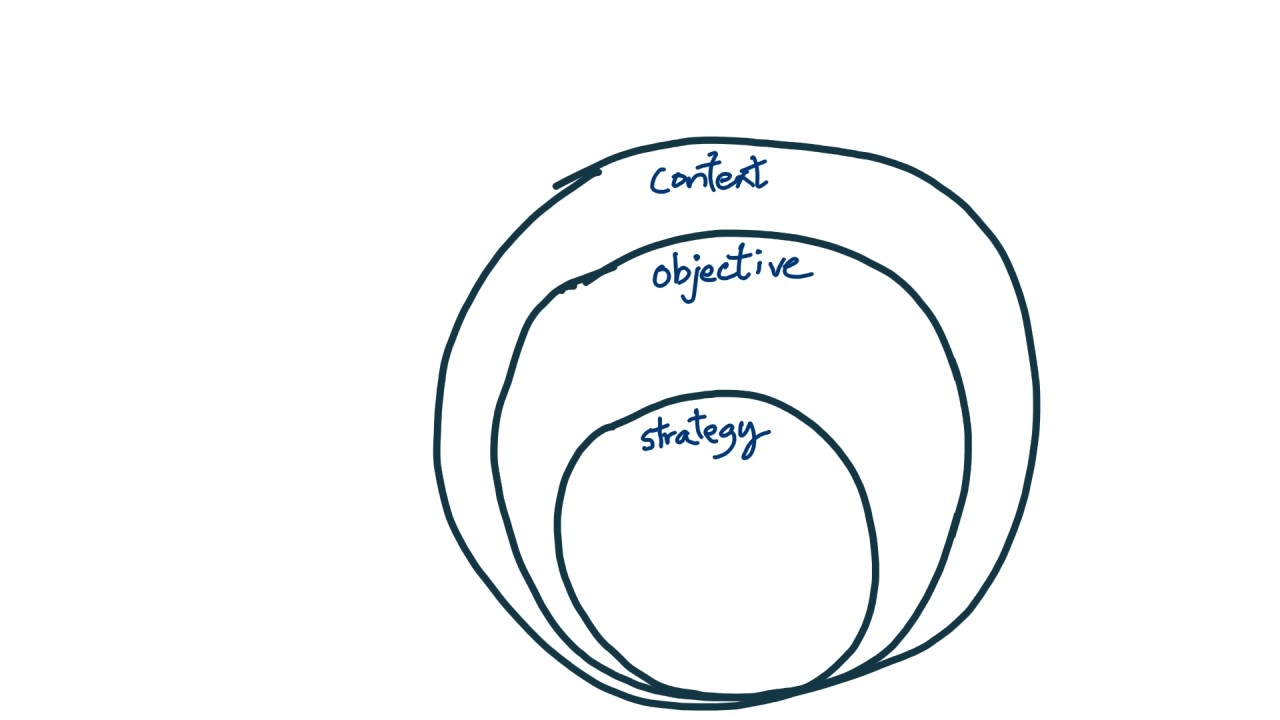On context, objective and strategy
In a recent coaching conversation with a sales leader, we explored the intriguing distinction between plans and strategies. It became evident that his team’s operational approaches were more tactical and immediate, not truly strategic (I’m intentionally avoiding the term “strategic” here). At best, he had devised a solid short-term plan for the quarter’s targets, while his developmental area was centered around strategic decision-making. To ensure my clarity, I resorted to the dictionary for concise definitions of “strategy” and “plan“.
According to conventional understanding, a “strategy” signifies a plan employed to attain an objective, while “plan” denotes a structured concept or arrangement aimed at realizing a future aspiration.
However, in the realm of Neuro Linguistic Programming (NLP), “strategy” takes on a more intricate definition: a progression of mental representations guiding an outcome. In this context, “representation” alludes to how our internal mental constructs are configured in response to external achievements. This holds significance when we examine how we process and represent our actions and reactions.
In today’s landscape, where we’re frequently inundated with titles like “10 Hacks for…” or “Top 5 Strategies to…” or “Achieve ______ in 3 Simple Steps“, it becomes imperative to delve into the divergent mental frameworks that govern our behaviors and responses across various circumstances and outcomes. Although a comprehensive exploration of NLP strategies is beyond the scope of this article, it’s crucial to acknowledge the intricate dance between an overarching strategy and a targeted objective.
Our inclination is often to seek insights from friends or colleagues, inquiring, “How did you manage to accomplish _______?” This prompts us to adopt their methods and incorporate them into our routines. While this approach might yield results temporarily, its efficacy wanes over time. This leads us to question our capabilities with statements like:
- I struggle to prioritize.
- Procrastination hinders my progress.
- I can’t maintain daily reading habits.
- My exercise routine has faltered compared to a few months ago.
These declarations don’t signify inadequacy; they signal strategies that were once effective but have outlived their utility. It’s easy to prematurely assume fault in our actions. This is precisely where the dynamic interaction between objective, context, and strategy takes center stage.
To illustrate, let’s delve into a scenario from one of my monthly NLP practice sessions. A participant expressed her struggle with maintaining consistent reading habits. Further inquiry revealed that her core desire was to experience enrichment. As we navigated this, she discovered that there were numerous avenues in her life through which she felt enriched beyond reading.
The critical question emerged: Was her aim to “feel enriched” or “feel enriched through reading“? This shift in perspective enabled her to recognize alternative sources of enrichment she had previously overlooked. This revelation transformed her tension about not reading daily into a sense of contentment and appreciation for the multifaceted aspects enriching her life. This instance underscores the need to align our strategies with the core objective while accommodating the ever-evolving context.
Often, we define objectives and devise action plans to attain them. However, over time, we become engrossed in the actions themselves, veering away from evaluating whether these actions truly serve our objectives. This phenomenon is prevalent both personally and professionally.
Drawing from my experience with women resuming their careers, I encounter declarations like “My goal is to become a subject matter expert” or “I aim to acquire proficiency in various applications” or “I need to participate in numerous initiatives.” Yet, underlying these surface-level aspirations lie potent objectives: aspirations for recognition, respect, and expertise. This exemplifies how initially chosen strategies, borrowed from external sources, might not resonate with our unique life context.
The journey of realizing one’s objectives necessitates a dynamic interplay among context, objective, and strategy. To cultivate clarity and efficacy in this process, consider the following steps:
- Identify: Pinpoint a desired achievement or aspiration.
- Probe Significance: Delve into the importance of this objective. Repeatedly question to uncover the core motivation. This elucidates the “why” behind the pursuit.
- Expand the Horizon: Step back to explore diverse avenues that could lead to the same objective. This expands your toolkit of strategies, preventing fixation on a single approach.
- Evaluate Ecology: Scrutinize the potential consequences of pursuing a particular strategy. Ensure that the chosen path aligns harmoniously with various facets of your life.
Let’s exemplify this framework through a scenario where an individual seeks enhanced sales prowess:
- Identify: The individual’s aspiration is to significantly boost customer acquisition for engineering products in the upcoming quarter.
- Probe Significance: Further exploration unveils that success would yield not only heightened incentives but also recognition and the ability to provide memorable family experiences. This crystallizes the objective: “Fostering recognition and enhancing family experiences.”
- Expand the Horizon: Beyond the predominant approach of driving customer acquisition, the individual realizes that conducting educational sessions or offering assistance to colleagues could equally lead to recognition. Additionally, orchestrating family outings and dedicating quality time could enhance family experiences.
- Evaluate Ecology: Pursuing higher customer acquisition might entail prolonged work hours, potentially affecting personal time. Balancing work commitments with family priorities becomes paramount. Similarly, fostering recognition might necessitate investing time in relationships with colleagues, possibly influencing personal time management.
In this light, a profound synergy surfaces among context, objective, and strategy. Context not only guides objective formulation but also shapes strategy selection. The iterative nature of this process acknowledges the fluidity of objectives and strategies, empowering course corrections.
In essence, the intricate interplay of context, objective, and strategy forms the bedrock of effective decision-making and goal realization. By acknowledging this dance and embracing flexibility, individuals can embark on a transformative journey toward achieving their aspirations.
If you’ve made it this far, I truly appreciate your engagement and diligence! My articles are aimed to highlight how skills in Neuro Linguistic Programming can propel workplace growth. If this resonates with you, let’s connect over a cup of chai or coffee. Your journey to growth starts here.

